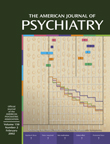Other than the DSM-IV itself, perhaps no single book in psychiatry has been as widely known and used throughout the world as the Comprehensive Textbook of Psychiatry. It has been the singular classic textbook in our field since its first edition emerged, more than 30 years ago, from within the Department of Psychiatry at New York Medical College. In its numerous editions since that time, it has remained comprehensive, well organized, and up-to-date. Generations of medical students and residents have been schooled with it as their central text. With its translation into nearly a dozen languages, it has also served as a valuable resource for those residing in remote reaches of the world.
Now in its seventh edition, and under the new editorship of the husband-and-wife team of psychiatrists, Benjamin and Virginia Sadock, this edition is larger than any of its predecessors and represents contributions from more than 400 individuals in our field. Many of the authors represent established leaders in their areas of expertise, such as Walter Menninger (“The Role of the Psychiatric Hospital”), Solomon Snyder (“Future Directions in Neuroscience and Psychiatry”), Larry Squire (“The Biology of Memory”), Steven Hyman (“Molecular Neurobiology”), Kenneth Kendler (“The Genetics of Schizophrenia”), and Louis J. West (“Quacks and Cults”).
In keeping with its tradition, this new edition also uses many new authors to facilitate the presentation of fresh approaches to each topic. Indeed, more than half of the contributors to this edition are new. This edition also introduces some new topics, such as the section on Emotional Intelligence written by Daniel Goleman, the author of the best-selling book by that name and frequent contributor to the New York Times.
Most of the chapters, of course, cover topics that have appeared in previous editions. However, even chapters written by authors who have contributed previously have generally been revised and updated. This is most evident in the sections on neural science. These sections have been expanded and updated, appropriately reflecting the numerous advances made during the 5 years since the publication of this book’s previous edition.
The next edition of this book will no doubt include information about the recent advances in the sequencing of the human genome, the emerging field of proteomics, and, for example, the recent use of c-DNA micro-assays in the scientific investigation of psychiatric disorders. By necessity, even such excellent textbooks as this one inevitably lag by several years in conveying to readers such cutting-edge advances in our field. This is further reflected in the fact that most of the references in this book, even in the neural science sections, are from publications that appeared 2 or more years before the book was published.
For the latest advances and information in our field, we must keep abreast of the scientific journals as supplements to our textbooks. Alternatively, we must await the next generation of interactive electronic and probably web-based educational resources, which may be linked in real time to current scientific investigations.
In the meantime, the Comprehensive Textbook of Psychiatry covers a vast array of topics that go well beyond the basic scientific underpinnings of psychopharmacology that many other textbooks on psychiatry emphasize. Here, numerous topics that have sometimes been taught more rigorously to medical students than to residents, which often fall under the vague rubric of behavioral sciences, are amply covered.
These include the basics of learning theory, anthropology, sociology, animal research, evolutionary biology, and the relation of each of these areas to human behavior and psychiatry. The section on epidemiology by Darrel Regier represents yet another topic that is likely to get little attention in textbooks focusing on clinical syndromes but is presented so well in this book. The section is carefully organized, includes readily understandable definitions of concepts, and avoids being excessively superficial on the one hand or too detailed on the other.
Additional areas that have been split off under separate cover in the case of many recent publications are included here in a single publication. These include the psychiatric aspects of a wide range of neurological disorders and other medical conditions, including cardiovascular disorders, cancer, and obesity, as well as the full gamut of psychotherapies and medications. Other special topics are also thoughtfully considered, including alternative and complementary health practices, stress and psychiatry, managed care, psychiatric rehabilitation, graduate education, ethics, law, and the history of psychiatry. Finally, this all-encompassing book fittingly ends with a section on world aspects of psychiatry, written by Jorge Costa e Silva from the World Health Organization, as well as a very brief statement on the future of psychiatry by Peter Kramer.
Throughout this two-volume book, the extensive editorial efforts to achieve uniformity in organizational structure, writing style, and scientific tone are evident. It is these efforts, coupled with the extraordinary collection of expertise on a vast array of topics, which continue to make this textbook truly valuable even as many other excellent textbooks on psychiatry are also worthy of our study.

